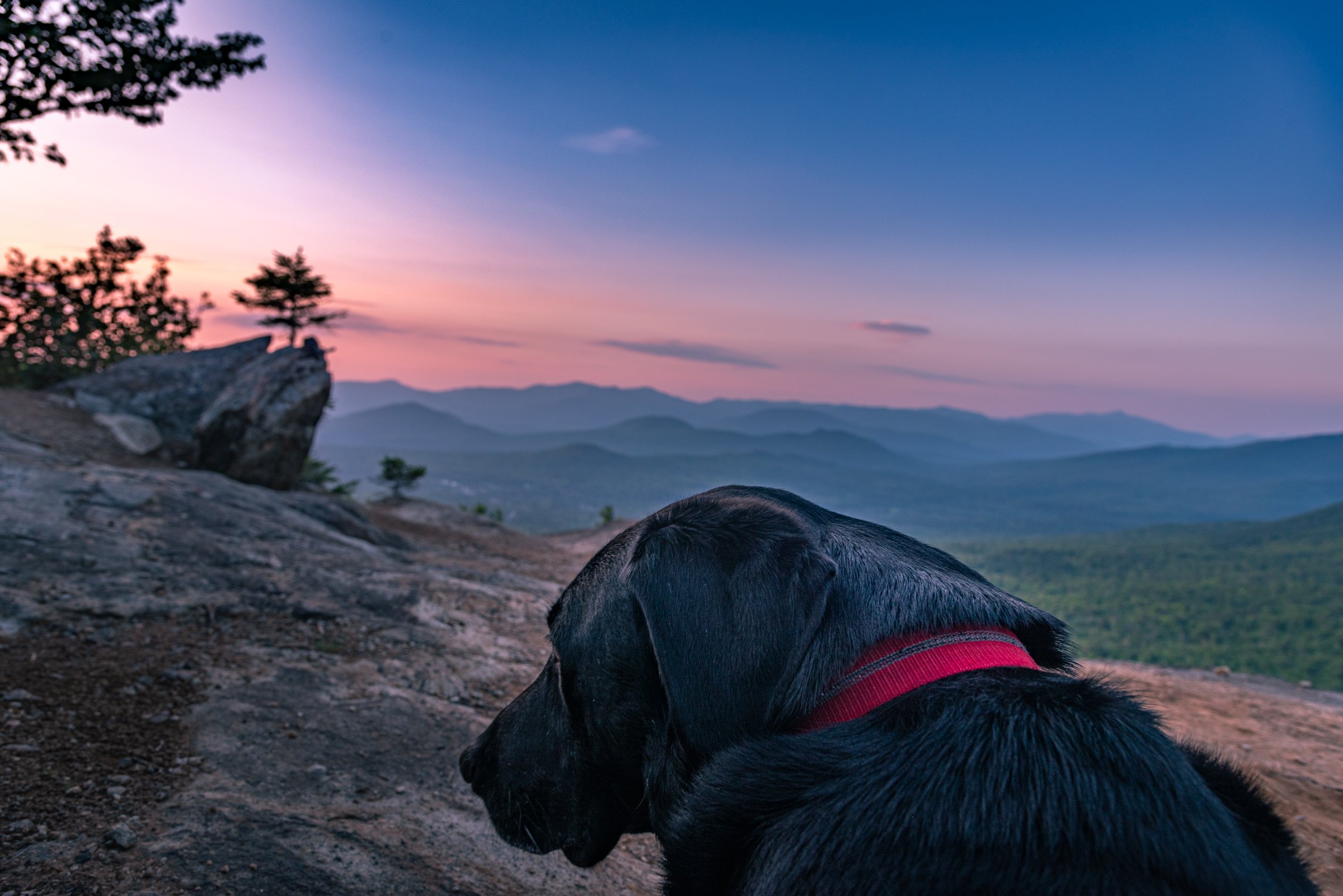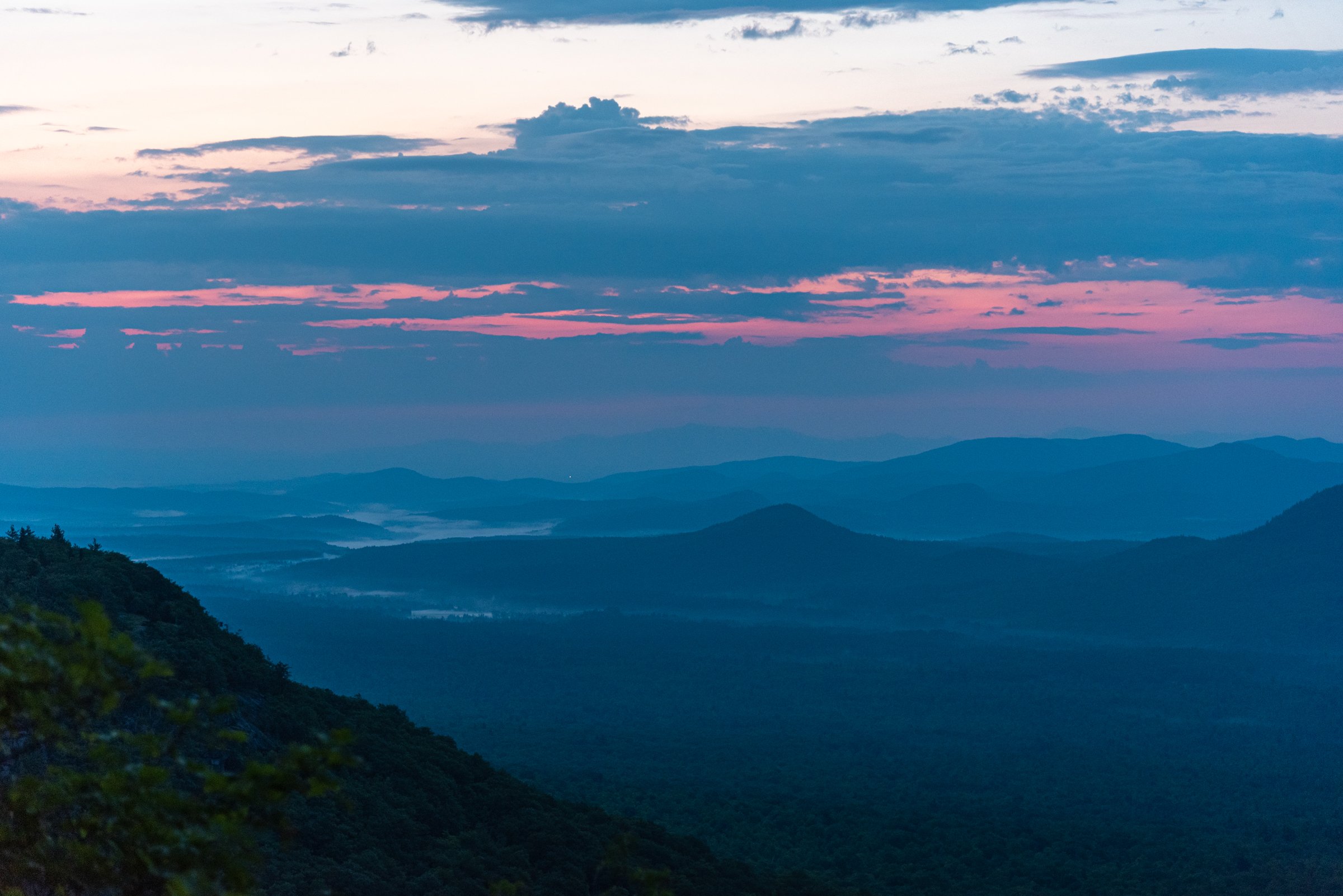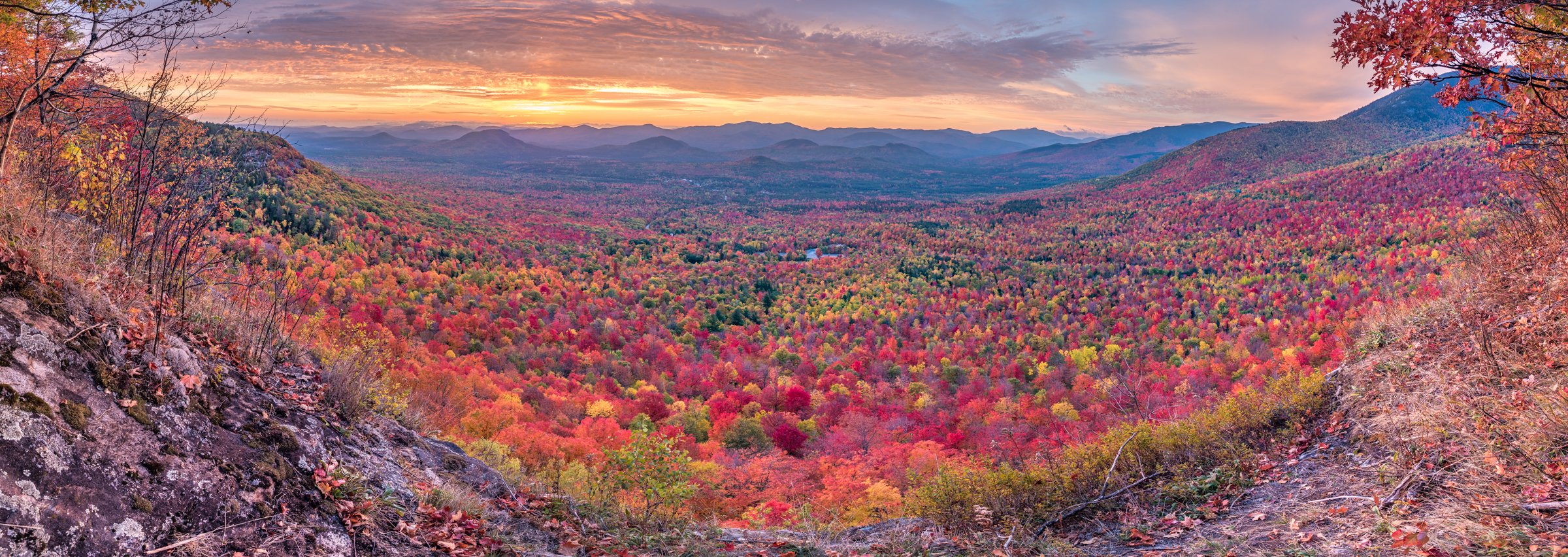Cobble Lookout Hiking & Photography Guide
Click the map to view an interactive version or download a PDF.
Highlights: Great views of the Sentinel Range and West Branch Ausable River valley.
Round-Trip Distance: 2.4 miles
Ascent: 368 feet
Difficulty: Easy
Directions: Google Maps
Important Notes: There is loose gravel on the summit, be careful of losing traction near the ledges.
Some of the links on this page will bring you to Amazon, where as an Amazon Associate I earn from qualifying purchases.
Hiking Guide
Cobble Lookout is a newer but quite popular hike in the Wilmington area. This short hike with an almost level grade affords amazing views of the West Branch Ausable River valley and the Sentinel Range. The trail is easy enough that it’s an excellent option for young kids or those that have trouble with long hikes or steep grades.
The trailhead is on Gillespie Drive, just off the Whiteface Memorial Highway. There is a very small parking area and plenty of room to park on the shoulder of the road. Check the trailhead signs, as there is another trail just a few hundred feet down the road that goes Cooper Kill Pond.
Just a few hundred feet down the trail, you’ll find the remains of an old rock quarry off the left. The quarry was likely used during the construction of the Whiteface Memorial Highway; today ice climbers occasionally scale its rocky faces. The trail gets a bit narrower after the quarry as it gently climbs and winds its way through the woods towards the lookout.
The trail gently climbs about 130 feet before descending a similar distance to the lookout. The net elevation gain is minimal from the trailhead to the lookout, but you’ll do a minor amount of climbing both going there and coming back.
The main lookout gives you a front row view of Marble and Esther Mountains. You can look down on the Whiteface Memorial Highway as it winds its way up from Wilmington to the toll booth. The views of the Sentinel Range that separates the East Branch and West Branch Ausable River are spectacular. Many people are drawn to hike the High Peaks, but little gems like Cobble Lookout are just as interesting in my opinion.
As with any hike or outing, plan ahead & prepare, and carry all of the essential gear to keep yourself safe while out in the woods. You'll find the local weather forecast below for convenient trip planning. Interactive and downloadable/printable PDFs maps are available above. If you are interested in hiking other mountains in the High Peaks region, I encourage you to pick up a copy of High Peaks Trails, published by the Adirondack Mountain Club. This is a definitive resource for information about hiking in this region and offers plenty of information to help plan your next adventure.
Photography Guide
Cobble Lookout is an excellent photography destination because of its spectacular views and easy access. The views are mostly to the south, so if you are planning to photograph sunset or sunrise, you’ll want to visit between September and February. Sunrises are slightly better than sunsets because Whiteface and Esther are so close to the southwest that they block sunset views for quite a long period of time. Though, if timed just right (~March 10th & October 10th) you may be able capture the sun setting between a gap in the mountains to the west.
If you visit outside of the September to February window, you can still get great shots of the mountains and valley below, but you won’t have the sun directly in the frame. I always encourage folks not to get fixed on the sun during the golden hours of the day, often if you look in the opposite direction you’ll have amazing light on the landscape. With a location like Cobble Lookout, it is worth putting that approach to good use.
I highly recommend using the PhotoPills app to help with planning your photography adventures. The app allows you to easily see the position of the sun and other astronomical features relative to a specific location and date.





